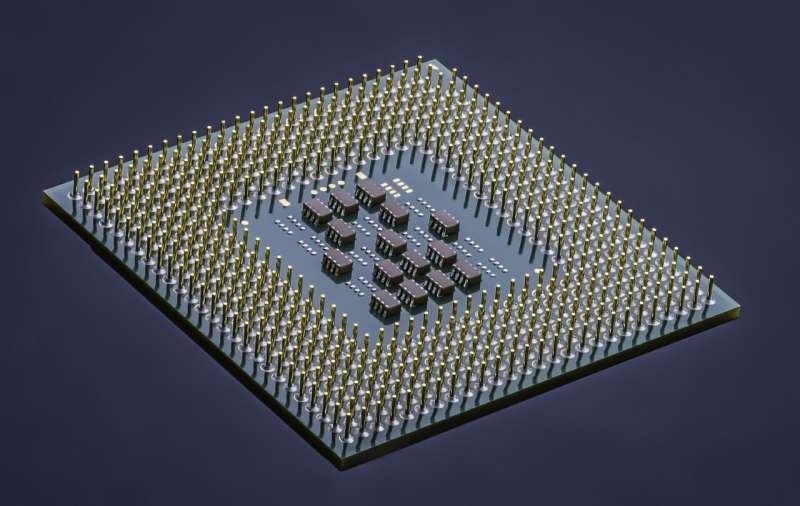
The United States said Tuesday it has agreed to provide up to $450 million to South Korean semiconductor firm SK hynix to help build a chip packaging plant in the US state of Indiana.
The award is the latest from the US government as it looks to cement its lead in the chip industry—especially for chips needed for the development of artificial intelligence—both on national security grounds and also in the face of competition with China.
President Joe Biden's administration has previously approved billions in grants to South Korea's Samsung, US titan Intel and Taiwan Semiconductor Manufacturing Company (TSMC) as it tries to avoid shortages of semiconductors—the lifeblood of the modern global economy.
The agreement with SK hynix, the world's second-largest memory chip maker, offers the company $450 million in proposed direct funding as well as $500 million in proposed loans, the US Commerce Department said in a statement.
The SK hynix facility, at the Purdue University Research Park, will house "an advanced semiconductor packaging line" that will manufacture next-generation high-bandwidth memory (HBM) chips, filling "a critical gap" in the US supply chain, the department said.
SK hynix dominates the market for HBM semiconductors and is a key supplier for Nvidia, which controls about 80 percent of the global AI chip market.
The "high-performance memory chips are crucial components of graphics processing units (GPUs) that train AI systems due to their increased processing power," the department added.
SK hynix CEO Kwak Noh-Jung said his company looks forward to "establishing a new hub for AI technology" and helping create "a more robust, resilient supply chain for the global semiconductor industry."
The Indiana facility is expected to create around 1,000 jobs, the Commerce Department said.
© 2024 AFP
Citation: US to give SK hynix $450 mn for chip packaging hub (2024, August 6) retrieved 6 August 2024 from https://techxplore.com/news/2024-08-sk-hynix-mn-chip-packaging.html
This document is subject to copyright. Apart from any fair dealing for the purpose of private study or research, no part may be reproduced without the written permission. The content is provided for information purposes only.